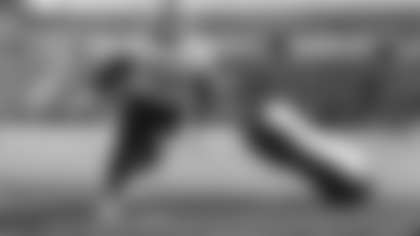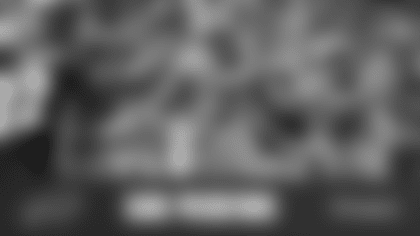This is about the time of year where NFL prospects have put themselves through all the preparation possible to be at their best physically, mentally and personally for the biggest job fair they'll ever attend. The NFL combine gets underway in Indianapolis next week, and three Bills players that went through the process last year remember the hype, the anxiety, the demands and the unexpected all too well.
For C.J. Spiller, Torell Troup and Alex Carrington, everything turned out well for them when the draft process was finally over. All three were among the top 75 picks in the 2010 NFL draft. The combine however, is the SAT of the pre-draft process.
All the preparation at professional training complexes where prospects work out from the end of their college season until the end of February is geared toward performing well at the combine. Spiller, Troup and Carrington all trained in that fashion.
Carrington was training in Tampa, Troup in Miami and Spiller went across the country to prepare in California.
"I was out in California because that's where my agent was located," Spiller said. "I was doing a lot of lifting and running and going through some of the tests that we were doing at the Combine. I prepared for the Wonderlic. My agent had a colleague at the agency that was very smart and very familiar with it and he helped us along the way. I felt really prepared going into the Combine."
For a smaller school prospect like Carrington the sports performance training experience was helpful in an additional way. It allowed him to develop some friendships and get a better handle on how his abilities matched up with those of players from bigger schools.
"I got a chance to train with guys like Trent Williams, Dez Bryant and Joe McKnight and get to know them," he said. "Having guys going through it with you helped."
All three set goals for themselves for the drills, but not all of them were pleased with their results. Carrington rolled an ankle on his second 40 and did not do any of the other drills besides the bench press where he posted 26 reps.
C.J. Spiller was expecting to clock an ultra-fast 40 time, but was in an unusual spot when the drill began.
"I got a curve ball there," Spiller said. "We practice for distractions, but out of the whole lot of guys that were out there I was the first one to run the 40. So I was able to relay what the surface was like to guys behind me so they could go to school on my 40. I wish I could've performed better."
Spiller was clocked at 4.32, which obviously didn't disappoint anyone but Spiller as he was made the ninth overall pick in the draft.
Meanwhile Troup, who had 34 reps on the bench, ran a 5.1 and had a 29-inch vertical was genuinely satisfied with what he did.
"I wasn't trying to be unrealistic and I went in there with a plan and I did it to a 'T'." he said.
As much publicity as the drills on the field get any NFL club will tell you it's the personal interviews and medical exams that are the most valuable part of the combine. Prospects prepare for the tough questions as best they can. There are usually a few teams that try to throw players off in the interview setting to see how they react, but none of Buffalo's top three picks experienced that.
"It wasn't too bad," said Troup. "Nobody was asking any crazy questions. What was interesting was how secretive everyone was about things. I'd be walking down the hall and the door would open and some team official would pull me in and say, 'Hey come here real quick. I want to talk to you. Don't tell anyone I talked to you.' It was so weird to see all these teams and their employees so secretive and pulling you into these back rooms. It was funny."
"I didn't get anything out of the ordinary," Spiller said. "I was asked what I might do after football."
What caught them more by surprise was just how much they were poked and prodded during the medical exams, which can drag on for several hours.
"They told us that we were going to be a piece of meat for a little while, but you really have no idea until you're in the hospital for five or six hours when you're waiting on MRIs and getting x-rays and doing blood work," said Carrington. "When you think of the combine you think of 40 times. You don't think about people pulling on your arms and testing your flexibility."
Looking back on their combine experience they all saw it as a positive, though Spiller wished there was more time for sleep during those hectic five days he was there.
"You're always up doing something," he said. "You really don't have time to rest."
As for advice for the 2011 prospects Buffalo's 2010 draft class recommends being as prepared as possible while not letting your nerves get the best of you.
"You work hard before the combine and once you're there you're there," said Troup. "Nothing is going to change if you're worrying about things. You just get out there and do the best you can. I had a couple of friends that were worrying incessantly. You can't do that. You just have to go with the flow."
Carrington was one of those players that had some initial anxiety about the whole process, but eventually came back to what the bottom line is for all the prospects.
"At the end of the day what I came to realize is its still football," he said. "They're not looking for guys that make a certain degree turn on the three cone drill. They're not looking for a certain body lean in the 40. They're looking for guys that can bear down and play football because it is a very long season."





